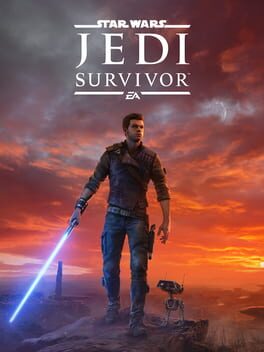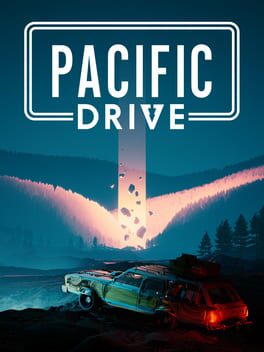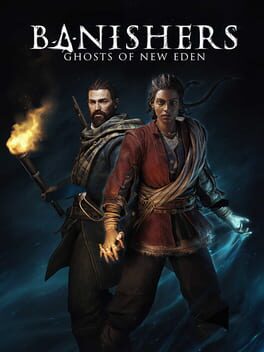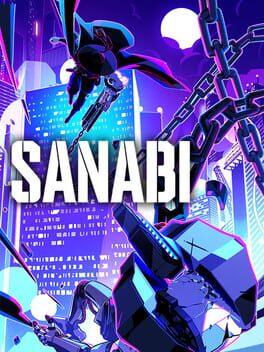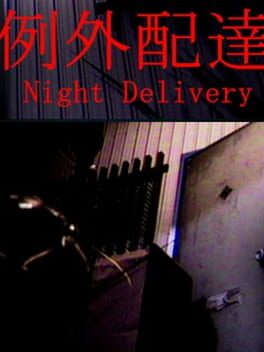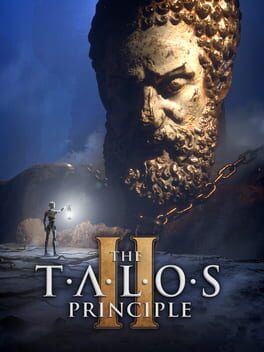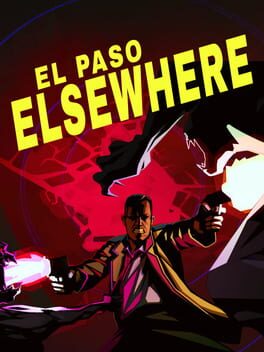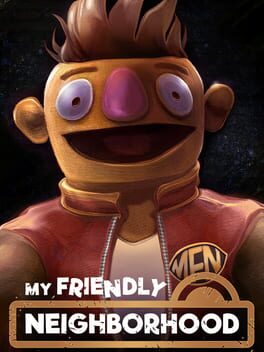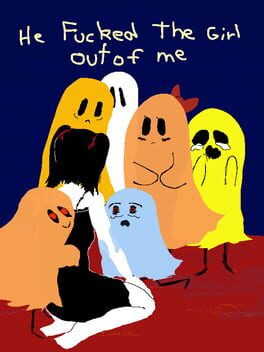mjoshua
2024
Animal Well is a genius game that everybody should try. I’ve heard of folks being 35 hours deep and still chasing mysteries, but once I hit credits at hour 8, I felt content to hang up my puzzle solving hat. I am that monstrous individual who didn’t swoon over Zelda: Link To The Past, but if that was your jam, I could see this being a 10/10 for you.
2024
Idle games never really click with me because leaving them running can subtly ramp-up my stress levels, and while Rusty’s Retirement does that too, it’s also just so damn delightful that I didn’t mind the little micro dose of anxiety. The absence of handholding is nice, but don’t be like me who wanted more guidance but forgot to check the in-game manual. My favorite part was after I unlocked all the homes and maxed out my tile usage, I handed the reigns to my eight-year-old who lit up like a light show. Great game for all ages!
2024
Indika is a masterful video game, though very frequently not-fun. I need to warn about Indika’s content as a religious horror game.
Towards the end, there’s a scene that addresses sexual coercion. Using the garish fade-to-red film technique to address the dehumanization without having to render the details, there’s a point where this game reaches peak narrative horror. This works with the core theme of a deep desire to crawl out your skin in fucked-up religious sort of prison that includes your own worldview. It’s just… forewarning / skip-ability would be good.
It reminds me of a lot of A24’s more recent horror films: the terror keeps things moving, puts us on the edge of our seat and makes is want for the ick to be defeated., The bad situation is the point. None of what’s happening is okay.
The more chill moments also have this air of discomfort. Yaking selfie screenshots of Indika feels a bit like an invasion of privacy. She looks briefly at the camera when you rotate around to see her face, then immediately looks away, trying to avoid the knowing fact that we’re watching her.
Taking selfies of Indika feels a bit like an invasion of privacy. She looks briefly at the camera when you rotate around to see her face, then immediately looks away, trying to avoid the knowing fact that we’re watching her.
The gameplay itself is mostly about trying to get out of your own personal hell. Indika frequently takes control of nightmarish Industrial Revolution era steam machines to seek out that one very-restrictive pathfinding exit. This makes exploration often feel as oppressive as Indika’s guilt-ridden alienation. The reprieve in all of this is a partnership with a man whose arm is infected with sepsis named Ilya. Their friendship book-ends the game and yields the most narrative surprises. I should go into it more, but for now I think I need to call it.
Towards the end, there’s a scene that addresses sexual coercion. Using the garish fade-to-red film technique to address the dehumanization without having to render the details, there’s a point where this game reaches peak narrative horror. This works with the core theme of a deep desire to crawl out your skin in fucked-up religious sort of prison that includes your own worldview. It’s just… forewarning / skip-ability would be good.
It reminds me of a lot of A24’s more recent horror films: the terror keeps things moving, puts us on the edge of our seat and makes is want for the ick to be defeated., The bad situation is the point. None of what’s happening is okay.
The more chill moments also have this air of discomfort. Yaking selfie screenshots of Indika feels a bit like an invasion of privacy. She looks briefly at the camera when you rotate around to see her face, then immediately looks away, trying to avoid the knowing fact that we’re watching her.
Taking selfies of Indika feels a bit like an invasion of privacy. She looks briefly at the camera when you rotate around to see her face, then immediately looks away, trying to avoid the knowing fact that we’re watching her.
The gameplay itself is mostly about trying to get out of your own personal hell. Indika frequently takes control of nightmarish Industrial Revolution era steam machines to seek out that one very-restrictive pathfinding exit. This makes exploration often feel as oppressive as Indika’s guilt-ridden alienation. The reprieve in all of this is a partnership with a man whose arm is infected with sepsis named Ilya. Their friendship book-ends the game and yields the most narrative surprises. I should go into it more, but for now I think I need to call it.
2024
I knew I’d dig Pacific Drive, but I didn’t expect the car maintenance to become my favorite part of it — or for it to keep me invested for nearly thirty hours.
My play style in games like this is to play the janitor: grabbing everything not bolted down and tossing it in my sack. That served me very well for the incredibly robust crafting system, amassing a large tool shed of doo-dads. Unfortunately, I think it also kept me too far ahead of this game’s best moments where everything is going wrong and you have to be like Matt Damon in The Martian to “science the hell” out of the problem, crafting the essentials to keep you going.
It pays to pay more attention to the details than I did: figure out where to find what kinds of resources and just grab what you need to have the best freeform experience. If you’re an anxious little thing like me, you might burn yourself out a bit on stopping for resources too often and losing momentum on some of the more grand objectives. As with any immersive RPG like this, it’s a dance between what you need to do versus trying to do everything. Finding that balance makes for the best trip.
Just like the best immersive sim games, there’s a tradeoff for the endgame that you either end up having the final mission that tests you in every lesson you learned — or lets go of the gas and lets you walk through a shoegazey reflection. This one fixes eyes to shoelaces, where I maybe wanted to really show-off, but it might be best for a game about driving to have at least one joyride.
My play style in games like this is to play the janitor: grabbing everything not bolted down and tossing it in my sack. That served me very well for the incredibly robust crafting system, amassing a large tool shed of doo-dads. Unfortunately, I think it also kept me too far ahead of this game’s best moments where everything is going wrong and you have to be like Matt Damon in The Martian to “science the hell” out of the problem, crafting the essentials to keep you going.
It pays to pay more attention to the details than I did: figure out where to find what kinds of resources and just grab what you need to have the best freeform experience. If you’re an anxious little thing like me, you might burn yourself out a bit on stopping for resources too often and losing momentum on some of the more grand objectives. As with any immersive RPG like this, it’s a dance between what you need to do versus trying to do everything. Finding that balance makes for the best trip.
Just like the best immersive sim games, there’s a tradeoff for the endgame that you either end up having the final mission that tests you in every lesson you learned — or lets go of the gas and lets you walk through a shoegazey reflection. This one fixes eyes to shoelaces, where I maybe wanted to really show-off, but it might be best for a game about driving to have at least one joyride.
Banishers look and plays like God of War Ragnarok. You’re exploring the wilds with your playable family member (in this case, a ghost spouse), you swap between the strengths of both characters, and everything you do works towards mending your grief using magical ghost-banishing means.
Maybe along the way you absorb the souls of some villagers to put the romance back in necromancy to resurrect your ghost spouse? It’s an option.
The combat lacks punch, but the acting makes up for it with likable protagonists. It’s a peak game from Don’t Nod Entertainment. I just didn’t expect the lore to take me out of it.
When I met the big bad enemy of the game, we hear her classification of ghost is just a “nightmare.” Then we’re told they’re the highest and most difficult kind of ghost to deal with. But I was thinking, “I’ve dealt with those before.” Fizzzzzz: there goes my wider curiosity of this world at large. Still, it kinda sucks to feel that way because this game clearly has tons going for it. Game retired for now. Probably ideal for gamer couples, though.
(Banishers Ghosts of New Eden)
Maybe along the way you absorb the souls of some villagers to put the romance back in necromancy to resurrect your ghost spouse? It’s an option.
The combat lacks punch, but the acting makes up for it with likable protagonists. It’s a peak game from Don’t Nod Entertainment. I just didn’t expect the lore to take me out of it.
When I met the big bad enemy of the game, we hear her classification of ghost is just a “nightmare.” Then we’re told they’re the highest and most difficult kind of ghost to deal with. But I was thinking, “I’ve dealt with those before.” Fizzzzzz: there goes my wider curiosity of this world at large. Still, it kinda sucks to feel that way because this game clearly has tons going for it. Game retired for now. Probably ideal for gamer couples, though.
(Banishers Ghosts of New Eden)
2023
2023
Wheeeee...STORYYYYYYY...whee...STORYYYYY...wheeee...STORYYYYYYYYYYYYYY. This describes the gameplay loop and why I was ANNOYED for the first two-thirds of the game. Then, in the last third of the game, the story-balls started landing one after the other. Plus, the gameplay went from slick-but-unchallenging to just plain slick.
Narratively, Sanabi went from feeling super wrote to having one of the best bait-and-switch landings that I've found in memory. I still think the script could be pared-down by 25%, but then I don't know that I'd edit much at all from the deeply affecting conclusion.
It never got quite as hard as I wanted, but I also ended the game in awe and tears. So I might return and clean-up the last three achievements. If you go in, expect the first two thirds of the game to be underwhelming, but to have the best time in the last act.
Narratively, Sanabi went from feeling super wrote to having one of the best bait-and-switch landings that I've found in memory. I still think the script could be pared-down by 25%, but then I don't know that I'd edit much at all from the deeply affecting conclusion.
It never got quite as hard as I wanted, but I also ended the game in awe and tears. So I might return and clean-up the last three achievements. If you go in, expect the first two thirds of the game to be underwhelming, but to have the best time in the last act.
2024
I love-hated Ultros and I do-don’t recommend it. Like as a love child of two visionaries, it’s a perfect game for your shelf; and probably worth having the physical edition purely for how it draws the eye and stands-out in a sea of similar looking games. On the other hand, it’s got some of the worst gamefeel of any metroidvania I’ve played in a while, often leaving me disoriented, confused, and unclear if I’m supposed to be banging my head against some spinning spikes or… something else? At least the shitty tools the game gives you are uniquely unlike other unlock able in games like it. So, yeah, it’s kind of a bad time, but also a part of an uncharted alien timeloop inside the guts of a space uterus / sarcophagus that I couldn’t say no to.
2021
My favorite thing a single-player game can do is make me feel like I’m not alone. It makes me feel like I’m in a community — where others care about me — and we make each others’ lives better. This is the opposite of what I expected from The Talos Principle 2, and I don’t think I’ll be able to stop thinking about how it makes me feel more connected to humanity as a whole.
I just finished this thirty-hour puzzle game that blew-away any expectation I could have had for it.
I could have had my opinion colored on this as a part of the publishing team, yet my heart is clear on this: the Talos Principle 2 is a grand achievement for game design, full stop.
I just finished this thirty-hour puzzle game that blew-away any expectation I could have had for it.
I could have had my opinion colored on this as a part of the publishing team, yet my heart is clear on this: the Talos Principle 2 is a grand achievement for game design, full stop.
2023
This is a biased review because Xalavier helped get me my first paid trailer gig in 2015, in which we used his voice to explain Super Flippin Phones. This was the first time of many that we would work together, working directly with his voice. So yeah. I took this game’s opportunity to literally play as my friend. It’s weird. You likely won’t have this experience. But it made this my most memorably powerful experience in games this year.
I was surprised by My Friendly Neighborhood: delighted to find an array of tightly-designed classic survival-horror systems that knocked me on my ass more than thrice. The attention to design detail took me back to the likes of Code Veronica, where Resident Evil placed a slightly higher priority on puzzle solving and multi-complex backtracking.
Played on the Survival difficulty — one step above normal — I found this precise level design that delivered a perfect blend of exploring every nook for ammo, piecing-together puzzles across the interlinking map, and the careful resource management of combat scenarios (where you ask if it’s better to shoot or run). I even got that sort of perverse-joy when I died after not saving for nearly an hour. Like, “Alright, let’s go!” Of course, I proceeded to make that same mistake a few more times at different intervals in a way that managed to elongate my five-hour run into nine hours, but I was happy (and very tense).
The Neighborhood might not make everybody want to be a neighbor, but the precise love for the “behind the scenes of Sesame Street” evoked a deep sense of affection for this lifelong Muppet fan. Each set piece evoked a unique sense of time and place just outside the margins of some of my oldest memories. It’s unlike anything I’ve played in another mascot horror game — or any other game at all. It’s not quite gonna earn a ton of nine-out-of-ten scores from most critics, but I think Destructoid got it right when they gave it an eight-point-five.
Played on the Survival difficulty — one step above normal — I found this precise level design that delivered a perfect blend of exploring every nook for ammo, piecing-together puzzles across the interlinking map, and the careful resource management of combat scenarios (where you ask if it’s better to shoot or run). I even got that sort of perverse-joy when I died after not saving for nearly an hour. Like, “Alright, let’s go!” Of course, I proceeded to make that same mistake a few more times at different intervals in a way that managed to elongate my five-hour run into nine hours, but I was happy (and very tense).
The Neighborhood might not make everybody want to be a neighbor, but the precise love for the “behind the scenes of Sesame Street” evoked a deep sense of affection for this lifelong Muppet fan. Each set piece evoked a unique sense of time and place just outside the margins of some of my oldest memories. It’s unlike anything I’ve played in another mascot horror game — or any other game at all. It’s not quite gonna earn a ton of nine-out-of-ten scores from most critics, but I think Destructoid got it right when they gave it an eight-point-five.
2024
Spent about 70 hours with this game before realizing I burnt myself out by going too hard on it. I just felt like I saw everything and was skipping the cutscenes because the writing lacked the mystery and charm of 13 Sentinels (the team’s last game). The tactics infused innovation into a structure akin to Fire Emblem, but despite being delightful and smart, never consistently elevated to “oh my god, I have to play more.” I feel bad being so far into the game and stopping because I burnt myself out by playing in hard (Tactician) and trying to do everything. Maybe I’ll return to it in a few years. Still, it’s highly recommended for if you don’t go too hard like I did and maybe enjoy it on a less-grindy difficulty.
